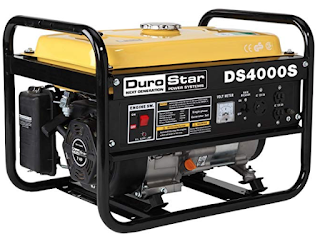They usually had a small Green House to start plants early from seed, and then set out the plants after the last frost and also to grow a few winter veggies.
Starting from green house plants instead of seeds, gave them a few weeks head start and allowed an earlier harvest. An early harvest began providing food sooner, and commanded a premium at the Farmers Market, when selling our crops, that was often three times (3X) higher than mid season crop prices.
With my grandparents and dad surviving the great depression, and World War II Food Rationing, they understood their Garden was important for survival. As a preteen boy during the Great Depression, my dad got a biscuit from government rationed flour and a spoon of scrambled eggs each day from their chickens and then had to use wilderness survival skills to find any additional food he was going to get. Harvesting food from nature was much easier then than today due to the large population we now have.
The point is, my family did a lot of serious gardening. From this gardening experience, I've developed some favorites like corn on the cob, green beans, pinto beans, okra, peas, potatoes, squash, & tomatoes, which grew well, taste good and in most cases, were easily preserved.
But there is one vegetable, that was the easiest to grow and harvest, began to deliver food early, even before most of the other vegetables were planted, and continued to yield nutritious food for several months. In addition, it was easy to cook and taste delicious. All of these are great traits for the Best Prepper Vegetable.
That vegetable is Asparagus! Why you might ask? You plant asparagus once, and let it grow for 2-3 years before harvesting, to let it develop a healthy root system; then each year around the first of spring, you have the first vegetable of the year, and it will continue to produce for several months. It begins producing about the same time as my turnip greens (and taste much better), which is historically the first garden food of the year. Further, no pesticides are required to protect from bug, which makes it a good Prepper Vegetable as pesticides may not be available in a serious SHTF Scenario. It also grows in almost the entire continental United States (see zone map at the bottom) and is very nutritious.
Clearly, you can see this vegetable has a lot going for it.
You can plant seeds, but planting 2 year crowns (roots) will get you a big head start on reaping your harvest. I have Heirloom Mary Washington (a classic), Jersey Giant & Jersey Supreme varieties. The Mary Washington are thin (mans little finger diameter) and tender and the Jersey varieties are thick (mans ring finger diameter) and produce more. There are constantly new varieties, like AsparaBest, with higher yields that might also be worth trying, but I do like having multiple varieties for redundancy. I would suggest having multiple plots, with one for each variety to avoid cross pollination.
Don't wait! Get Started NOW, on your way to a healthier life style and security of your food supply. With a low budget garden and very little livestock (like chickens), you can survive on what you raise. Start your small Practice Garden today.
I've included some detailed planting & harvesting information at the bottom.
For additional information see the following links:
Blog Table of Contents
Gardening Links
Gardening 101– Soil Basics
Green House for year-round food supply
Vegetable Planting Dates
Vegetable Days to Harvest
Seeds for Survival
Preppers Garden
Aquaponics
Prepper Livestock series
DIY Solar System
Or click on a label at the BOTTOM for similar topics.
Here is some additional planting reference information:
Product Details
- Height: Grows 3 - 4 Feet tall.
- Spacing: 12 - 18 inches apart.
- Depth: Plant 6-8 inches deep. These plants can be planted with a trowel.
- Spread: 12 - 18 inches.
- Light Required: Full Sun in most cases, but some varieties are better for partial sun.
- Yield: Bears when roots are 3 years old, so if you purchase a 1 year plant, you can harvest in 2 years, if you order a 2 year plant you can harvest in one year. Limit harvest the first & second year. It will take 3 years after planting for the plants to be strong enough to be fully harvestable.
- Size: 6 - 12 inch spears, depending on variety.
- Zone: 3-8; Zone 9 for some varieties.
- Pruning: Cut the ferns down to ground level in the Fall once they have turned brown, or in the early Spring before new growth appears.
- Foliage: Graceful, feathery green foliage.
- Comments: Different varieties perform better in different soils, temperature regions, and are hardier than others. For this reason, I recommend you check out the BLUE Links to select a couple of varieties for your region. By having more than one variety, you can see what grows best and plant more of that type.
- Fertilize with one cup of 4-3-1 (NPK) per 25 foot row or for every 16 to 24 plants depending on spacing and how many you have planted in 25'.

























